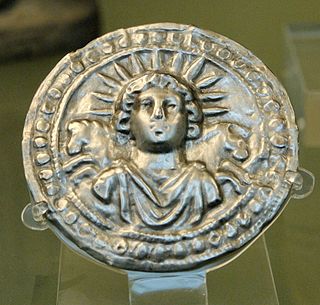This article needs additional citations for verification .(January 2021) |
| Millennium |
|---|
| 1st millennium |
| Centuries |
| Decades |
| Years |
| Categories |
The 320s decade ran from January 1, 320, to December 31, 329.
This article needs additional citations for verification .(January 2021) |
| Millennium |
|---|
| 1st millennium |
| Centuries |
| Decades |
| Years |
| Categories |
The 320s decade ran from January 1, 320, to December 31, 329.
320
321
322
323
324
325
326
327
328
329
320



321
322
323
324
325
326
327

328
329
The 300s decade ran from January 1, 300, to December 31, 309.
The 400s decade ran from January 1, 400, to December 31, 409.
The 310s decade ran from January 1, 310, to December 31, 319.

Year 321 (CCCXXI) was a common year starting on Sunday of the Julian calendar. In the Roman Empire, it was known as the Year of the Consulship of Crispus and Constantinus. The denomination 321 for this year has been used since the early medieval period, when the Anno Domini calendar era became the prevalent method in Europe for naming years.

Year 325 (CCCXXV) was a common year starting on Friday of the Julian calendar. At the time, it was known as the Year of the Consulship of Proculus and Paulinus. The denomination 325 for this year has been used since the early medieval period, when the Anno Domini calendar era became the prevalent method in Europe for naming years.
The 380s decade ran from January 1, 380, to December 31, 389.
The 180s decade ran from January 1, 180, to December 31, 189.
The 270s decade ran from January 1, 270, to December 31, 279.

Year 313 (CCCXIII) was a common year starting on Thursday of the Julian calendar. At the time, it was known as the Year of the Consulship of Constantinus and Licinianus. The denomination 313 for this year has been used since the early medieval period, when the Anno Domini calendar era became the prevalent method in Europe for naming years. This year is notable for ending of the persecution of Christians in the Roman Empire.
The 330s decade ran from January 1, 330, to December 31, 339.
The 340s decade ran from January 1, 340, to December 31, 349.
The 290s decade ran from January 1, 290, to December 31, 299.
The 250s was a decade that ran from January 1, 250, to December 31, 259.
The 260s decade ran from January 1, 260, to December 31, 269.
The 280's decade ran from January 1, 280, to December 31, 289.

Year 326 (CCCXXVI) was a common year starting on Saturday of the Julian calendar. At the time, it was known as the Year of the Consulship of Constantinus and Constantinus. The denomination 326 for this year has been used since the early medieval period, when the Anno Domini calendar era became the prevalent method in Europe for naming years.

Year 307 (CCCVII) was a common year starting on Wednesday of the Julian calendar. At the time, it was known as the Year of the Consulship of Severus and Maximinus. The denomination 307 for this year has been used since the early medieval period, when the Anno Domini calendar era became the prevalent method in Europe for naming years.

Year 335 (CCCXXXV) was a common year starting on Wednesday of the Julian calendar. At the time, it was known as the Year of the Consulship of Constantius and Albinus. The denomination 335 for this year has been used since the early medieval period, when the Anno Domini calendar era became the prevalent method in Europe for naming years.

Year 320 (CCCXX) was a leap year starting on Friday of the Julian calendar. At the time, it was known as the Year of the Consulship of Constantinus and Constantinus. The denomination 320 for this year has been used since the early medieval period, when the Anno Domini calendar era became the prevalent method in Europe for naming years.

Year 316 (CCCXVI) was a leap year starting on Sunday of the Julian calendar. At the time, it was known as the Year of the Consulship of Sabinus and Rufinus. The denomination 316 for this year has been used since the early medieval period, when the Anno Domini calendar era became the prevalent method in Europe for naming years.
{{cite book}}: CS1 maint: date and year (link){{cite book}}: CS1 maint: date and year (link)